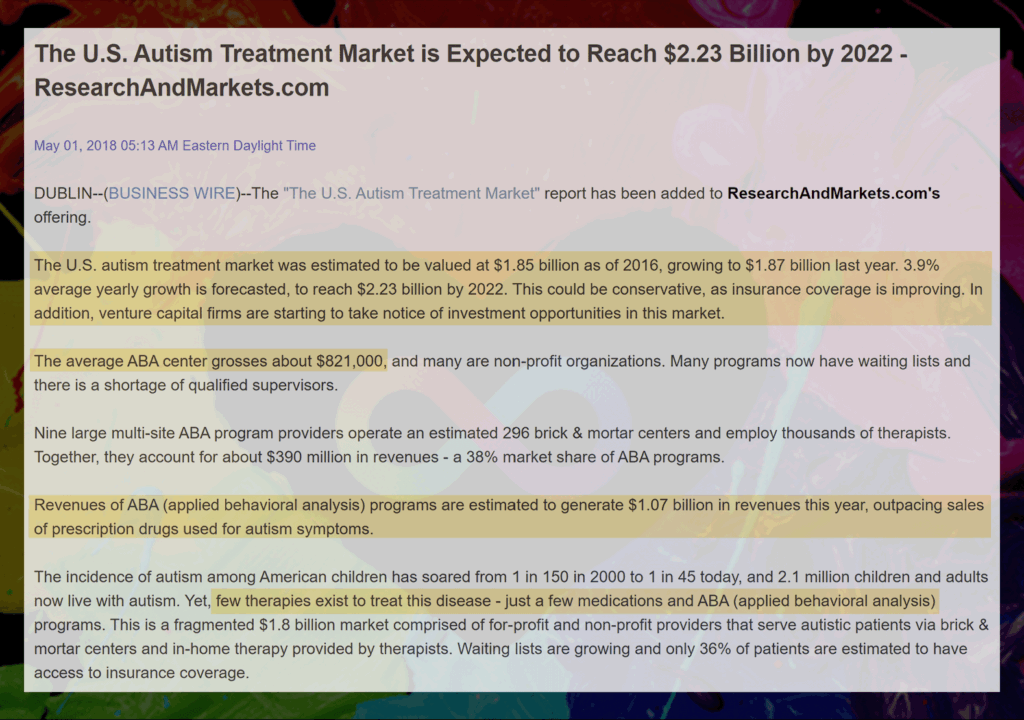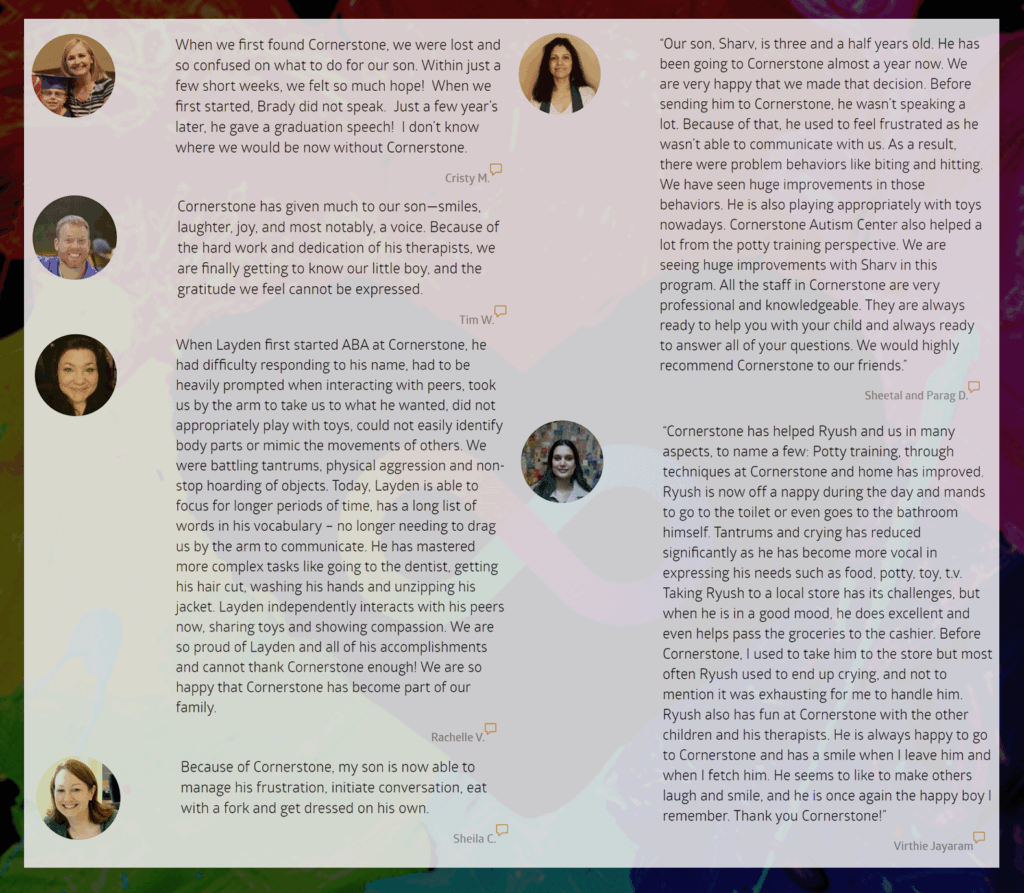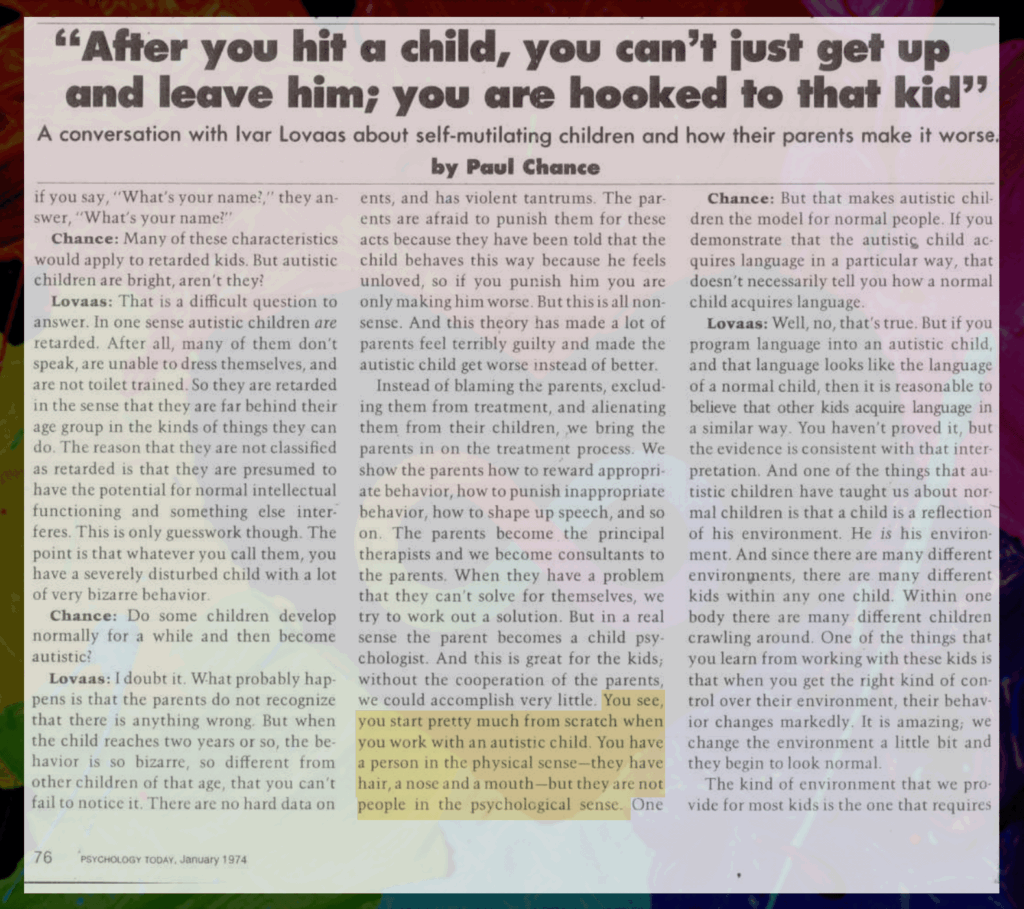ABA Providers are businesses in a billion-dollar “Autism Treatment” market that exists to treat “this disease” that occurs in 1 in 45 American children, about 2.1 million autistic people.

“The U.S. autism treatment market was estimated to be valued at $1.85 billion as of 2016, growing to $1.87 billion last year. 3.9% average yearly growth is forecasted, to reach $2.23 billion by 2022. This could be conservative, as insurance coverage is improving. In addition, venture capital firms are starting to take notice of investment opportunities in this market.
The average ABA center grosses about $821,000…
Revenues of ABA (applied behavioral analysis) programs are estimated to generate $1.07 billion in revenues this year, outpacing sales of prescription drugs used for autism symptoms.
… few therapies exist to treat this disease – just a few medications and ABA (applied behavioral analysis) programs…
“The U.S. Autism Treatment Market is Expected to Reach $2.23 Billion by 2022 – ResearchAndMarkets.com” (May 1, 2018). Business Wire.
You (the parents, caregivers, and educators of autistic children) are the clients and customers of this business. You are the target audience for these websites, promotions, and marketing materials because it is you who they’re trying to convince to enroll your child.

The testimonials on their websites come from people like you, not the autistic children and adults who’ve been through the program. If you listen to autistic people, they will tell you it’s abuse.
The product these businesses are selling you, that made them this billion-dollar industry, are your autistic children. Please support and accept autistic people.

“You see, you start pretty much from scratch when you work with an autistic child. You have a person in the physical sense—they have hair, a nose and a mouth—but they are not people in the psychological sense.”
— Ole Ivar Løvaas, founder of Applied Behavior Analysis
This Lovaas quote came from a 1974 interview titled, “After you hit a child, you can’t just get up and leave him; you are hooked to that kid” by Paul Chance, published in Psychology Today.

